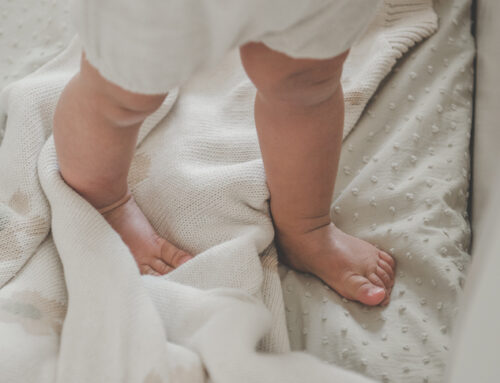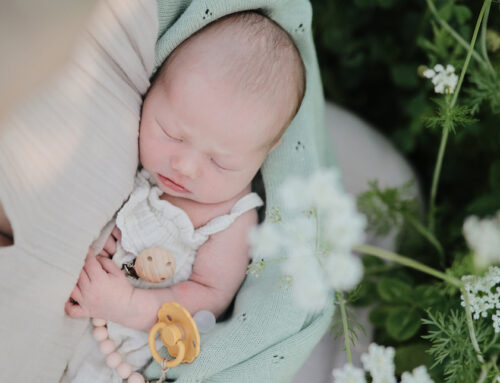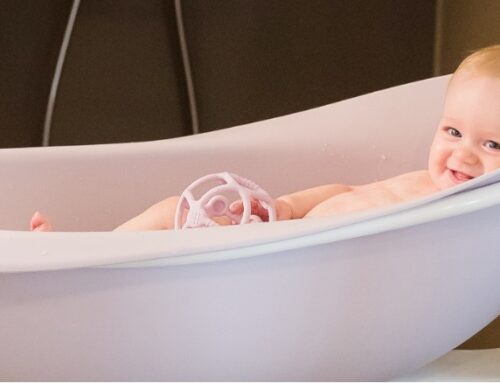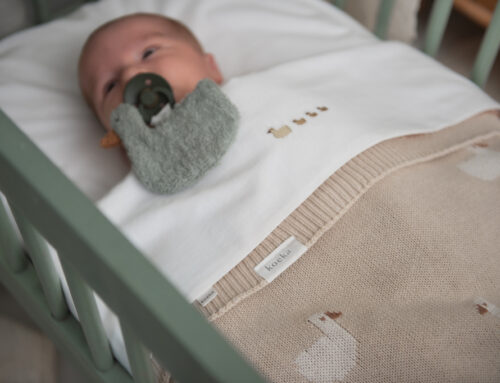Breastfeeding has rightly received a lot of attention in recent years, yet a proportion of women prefer to bottle-feed. Anyway, breastfeeding mothers switch to bottle feeding at some point. What is the status of information on bottle feeding, is it still up to date or could it be improved?
e-book about bottle feeding
In reply to this theme, we met Esther van Bloemen-Bartels, who is a baby consultant under the name baby nurse with KIWA quality mark (quality mark for self-employed workers without employees in health care) and is a member of the Professional Association Baby Consultants Netherlands. She wrote her first e-book on bottles and bottle teats in 2017. This was much needed, she said, because at that time there was no bundled information for parents and professionals about bottle feeding.
How to hold a bottle, a baby..
‘I received many compliments, ranging from baby professionals, teenage mothers who confessed to feeling so much more confident after reading, to women with autism spectrum disorder who said they were happy with the answers to many of their “Why so?” questions,’ Esther says. Without further promotion, the book was downloaded daily by interested people. Esther created the e-book on a non-profit basis because she feels it is important to reach as many parents and caregivers as possible. In February of this year an update was published that can be downloaded by anyone for free on ‘babyverpleegkundige.nl’. Esther: ‘There was so much more to tell. The increase in the number of words to be written made me decide to divide the book in two. In hardware: the bottles and bottle nipples and the software, by which I mean how to hold the bottle, how to hold the baby, why you have to sit comfortably, etc. ‘
In your latest e-book, you go into more detail about bottle feeding. Why are they not sufficiently known to mothers? There are also breastfeeding positions, aren’t there?
Esther: ‘I explain in the book what therapeutic or responsive feeding is. In doing so, you gear actions to the child’s development and metabolism. Good eye contact with the child is an important part of this, as is a correct feeding position. Babies who are fed properly are often less prone to cramps and regurgitation because they are fed calmly and in tune. I am convinced that therapeutic feeding is best for most children. There are a few exceptions, such as premature babies who are best fed on their left side, with their head slightly higher than their body. Older babies with a ‘been-there, done-that’ attitude may benefit from the Schwester Liselotte position where the baby lies with its back on the mother’s slightly raised thighs, with baby’s bottom against mother’s tummy.’
She’s continues: ‘Why these postures are not known is a difficult question. Sometimes I think that in the Netherlands we all pretend to know everything about bottle feeding as it was the most normal thing in the world for generations, with a much smaller supply of bottles, teats and materials. I think that is not quite fair to the brand-new parents who are feeding and raising their babies today.’
Which professionals advise mothers about bottle feeding?
Are they all aware of the opportunities and problems mothers experience? ‘There are so many healthcare professionals in the baby field! I think we can divide them into two groups: those who provide generalist or first-line care, such as maternity care and the baby clinic. In addition, there are second-line care providers: health professionals from whom you can receive specialist care such as a lactation expert, a preverbal speech therapist or a baby consultant. I think there are also big differences within these groups, although with the guidelines of the Dutch Centre for Youth Health there should be much more unanimity in our advice.’
Bottle feeding is getting more and more similar to feeding at the mother’s breast. What do you think about bottle and teat developments? What could be better?
‘Many bottles have an anti-colic system. This is a kind of valve in the bottle that is vented after the baby has sucked in the vacuum. In a Dr. Brown’s bottle, the small pipe in the middle of the bottle is very visible. But with Difrax and MAM it is located inconspicuously in the base and with the Philips/AVENT and Tommee Tippee it is located inconspicuously in the teat. So some things you don’t see, but they are there. It’s a bit like: sometimes you don’t know what you don’t know. And that brings me to the question, “What could be better? That is passing on knowledge and sharing knowledge. And for the healthcare professionals in particular: don’t work secretly, but be open to others, make time for peer supervision with another discipline. That is so educational and fun.’
As an expectant mother, how do you decide what a good bottle is?
‘That is very difficult. You have to ask yourself what you want to use the bottle for and how often. If you want to bottle feed but are still mostly breastfeeding, then using a wide neck bottle is recommended. In the baby’s mouth, this shape is resembles the breast best. If the lips do not curl out nicely, it is wise to switch to a narrow neck, even if the mother is still breastfeeding. My book describes even more situations and if the construction of the mouth, lips and tongue that can influence the choice of a certain type of bottle.’
What do you think of the move to glass and sustainability?
‘I hesitated for a long time whether or not to dedicate a chapter to this. I have chosen not to do it. As a result, I get this question more often now! I’ll have a look at it, maybe I’ll write something about it in the next version. For now, I’ll stick with a bit of history; the glass bottle disappeared from the range because parents found it so heavy. Now it is back, but I also see bottles on the market made of stainless steel and silicone. I am waiting to see the experiences of the families I visit and the studies that are being done.’
And what is a good teat (type), or is it just a matter of trying it out?
‘Never change a winning team,’ it is sometimes said. If you have a nipple that allows you to feed for 20 minutes, without leakage and with a happy baby, then go ahead and keep on using it. Parents should always check the teat carefully for cracks or holes, and if there are any, they should be replaced immediately. If parents are not satisfied with their baby’s drinking behaviour, it is wise to do the 1-3-6-9 month check, as most manufacturers offer a different size for that age group.’
When it comes to cleaning, it is now said that bottles and teats can go into the dishwasher (except for problem babies), is this still true?
‘That’s right, that’s the advice from the Netherlands Nutrition Centre. In the dishwasher on a programme of at least 55 degrees Celsius or with hot water and soap and then clean with a bottle brush. Very occasionally, I come into families where I see bottles with little black or green bacterial specks in them. Then I am very strict and say something about it.’
Has there been any change in advice for bottle-feeding in coronary times?
‘No, there hasn’t. But the ability to watch other parents feed by bottle is drastically reduced under lockdown. Young parents have fewer opportunities to learn using the effective learning method of ‘watching and imitating’. I hear from colleagues in hospitals about the explosive increase in the number of crying babies in the paediatric ward. In the home situations, I notice that I have much more contact with clients via WhatsApp, so that I can look into the home situation with photos and videos. It really is a very strange time to be the parent of a young child now. Hats off and a big round of applause for the parents with children from 2020 and 2021.’
This article was published in June issue of BabyWereld 2021.
Read more articles








